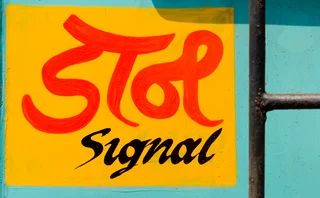
Laying down the ground rules
As with any ‘watertight’ contract, holes inevitably appear. And so Isda has been forced to continuously revisit the documentation guidelines on credit default swaps in an attempt to respond to new concerns and the changing market

One critical element that limited the expansion of the CDS market in its early days was the absence of any broadly accepted and standardised documentation clearly defining the precise terms and conditions of contracts. Instead, even after the publication of a 19-page ‘form of confirmation’ by the International Swaps and Derivatives Association (Isda) in 1998, these tended to be negotiated between buyers and sellers of protection on what amounted to an ad hoc basis, which inevitably opened the way for disputes between the two parties when credit events occurred. As the BIS puts it, “risk shedders appear sometimes to have been able to exploit the terms of credit derivative agreements at the expense of risk takers, insofar as payments under CDS contracts are not conditional on actual losses.”
The Russian default of 1998 brought some of the disagreements between buyers and sellers of protection into the public eye. As the Bank of England explained in its Financial Stability Review, published in June 2001, one dispute arising from the Russian default concerned a short delay in payments due on the City of Moscow’s debt. “Some market participants had entered into CDSs that did not include any specific provision for grace periods to allow for technical delays in making payment by the reference entity,” this explained. “The English courts ruled that the delayed payment was a credit event under the terms of these contracts and the protection seller should settle.”
An essential breakthrough for the development of the CDS market came in 1999, when, in response to disagreements prompted by the Russian crisis, Isda published its new ‘master agreement’ designed to standardise credit derivatives contracts, formalising the guidelines on standard documentation originally published at the beginning of the previous year. One year in the making, and applicable to contracts on sovereign and non-sovereign names alike, these guidelines, according to Isda, were “developed by a working group of Isda member institutions, including most of the world’s leading participants in privately negotiated derivatives activity”.
Delegates at the Isda conference in Vancouver in March 1999 were given a sneak preview of these new definitions, which were formally unveiled in July the same year. As Isda commented in 1999, the new definitions enshrined within the master agreement were “viewed as critical to the growth in demand for these types of transactions”.
While these guidelines represented an important step forward for the CDS market, they did not constitute a watertight and definitive solution applicable to all developments impacting on the market. One example of a situation not decisively addressed by the Isda guidelines came in November 2000 with the demerging of the UK power company, National Power, into two successor entities, Innogy (which focused purely on the UK market) and International Power, which concentrated on business development in all other markets.
According to a Fitch analysis, this demerger resulted in a question as to the identity of the reference entity in connection with a number of credit default swaps – given that the Isda definition of a successor company referred to the entity that assumes “all or substantially all of the obligations”.
In a market as young, fast-expanding and open to innovation as the CDS market, it is inevitable that determining documentation standards should be a dynamic rather than a static process, and the debate over the status of a successor company provided one good example of Isda’s flexibility in re-drafting its guidelines to bring more clarity and transparency to the derivatives market.
In this instance, Isda released a supplement on successor events in November 2001, advising that it was replacing the “all or substantially all” language in its definitions with a numerical threshold. This would determine that if an entity succeeds to 75% or more of the bonds or loans of the original reference entity, “then the sole successor would be that entity”. The same supplement outlined alternative approaches in the event that the 75% threshold is not met.
While this supplement clearly removes uncertainties regarding the specific issue of successor obligors, Isda will probably be called upon to publish many more such amendments as additional unanticipated ‘special situations’ emerge in the fast-evolving CDS market. A report published by Fitch in October 2002 neatly sums up the problem that Isda has inevitably needed to grapple with in the drafting of watertight documentation standards that are universally acceptable. “In attempting to standardise documentation for credit default swaps, Isda faces the unenviable task of trying to manage conflicts of interest between protection sellers who want the narrowest possible definition of a credit event and the narrowest possible interpretation of deliverable obligation characteristics and protection buyers who need the opposite,” this explains.
Trigger events
It is important to recognise that the contractual terms of credit default swaps provide no protection against ‘events’ such as disappointing earnings, rating downgrades and other market-related developments that may lead to spread widening and potential losses for bondholders. Nor, therefore, do credit default swaps provide much of a defence for investors who have simply made a poor investment decision.
In broad terms, the events that will trigger a payment by sellers of protection in the CDS market include the following:
• Bankruptcy: this refers to a corporation’s insolvency or its inability to pay its debts, and is therefore the most immediately visible event that would trigger payment on a credit default spread.
• Failure to pay: if after expiration of the applicable grace period, the reference entity fails to make payment with respect to principal or interest on one or more of its obligations. Failure to pay sets a minimum dollar threshold.
• Repudiation/moratorium: if the reference entity or government authority indicates that one or more of its obligations is no longer valid, or if the entity or government stops payment on such obligations. This provision now applies only to sovereign reference entities.
• Obligation acceleration: when an obligation has become due and payable earlier than it would otherwise have been due because of a borrower’s default or similar condition. Like failure to pay, obligation acceleration is subject to a minimum dollar threshold payment amount.
• Restructuring: this has proved to be the most thorny of the credit events originally outlined by Isda, and refers to a change in the terms of a borrower’s debt obligations that are deemed to be adverse for creditors. The sticking point here has often been defining what is or isn’t necessarily ‘adverse’ for bondholders or lenders, which has led to a lively and protracted debate (see below).
Credit event procedures
In the event of one of the above developments occurring, a so-called ‘credit event notice’ will be delivered by the protection buyer, protection seller, or both, indicating that a trigger event has taken place and providing two sources of publicly available information describing the occurrence of the credit event.
The debate over restructuring
Credit derivatives market terminology would suggest that credit default swaps are contracts that, by definition, provide buyers of protection with a form of insurance against default – that is to say, against the failure of a borrower in the loan or bond market to meet its interest obligations. Although that definition would appear to be clear enough, there have already been a number of well-documented cases where technical loopholes have been exploited by signatories to CDS contracts, in turn forcing a reassessment of accepted definitions among participants in the market.
Perhaps the best known of these took place in September 2000, when the US life insurance company, Conseco, announced that it was planning to restructure $2.8 billion of its debt, extending the maturity of some of its loans and prompting a row between sellers and buyers of protection as to whether or not restructuring qualified as a credit event triggering payment.
The squabble over Conseco led to the emergence of what many bankers described as a ‘two-tier’ CDS market. One of these tiers, championed by many market participants in the US, adopted the view that the restructuring of bank loans should not represent legitimate triggers for pay-outs on CDS contracts, because restructuring did not always lead to losses for bondholders, and could therefore be unjustifiably exploited by buyers of protection at the expense of sellers. The second tier of the market, resolutely espoused in Europe, maintained that a loan restructuring should still be viewed as a negative credit development, and should therefore remain a trigger event in the terms of CDS contract documentation.
Although it may seem curious that, within a global financial services market, there are still differences in opinion about restructuring on either side of the Atlantic, there is an element of logic to this apparent schism in views. US bankruptcy laws enshrined in Chapter 11 legislation are generally much more accommodating towards troubled companies failing to meet liabilities than those in force throughout the UK and continental Europe. The result is that companies entering into restructurings triggered by Chapter 11 proceedings in the US can (and frequently do) emerge relatively speedily from the process as strong and healthy credits.
The same cannot be said of companies plunging into bankruptcy in Europe, which has generally protected sellers of protection in the CDS market on this side of the Atlantic. As Fitch explained in an analysis published in October 2002: “Europe has not encountered a restructuring where protection sellers incur losses due to soft credit events, as occurred in the case of Conseco.”
Following the Conseco episode, Isda published a ‘modified restructuring clause’ in spring 2001, adding a number of limitations to the 1999 guidelines. One of these was a ‘restructuring maturity limitation’ restricting to 30 months the maturity of obligations that can be delivered following a restructuring, and therefore preventing the delivery of long-dated securities that may be trading at a discount.
When the restructuring supplement was published in May 2001, Isda’s chief executive officer, Robert Pickel, announced that “the supplement represents the consensus of a diverse range of constituents in the credit derivatives market, including portfolio managers, credit protection sellers and dealers. Completion of the supplement should help to ensure market integrity, which will promote continued growth in the use of credit default swaps.”
The debate over convertibles
Aside from the controversy over the impact of corporate restructuring on the CDS market, another cause célèbre revolving around the terminology of the credit derivatives market unfolded as a result of uncertainty over the status of convertible bonds (fixed-income securities convertible into equity) as deliverable securities following a credit event.
In February 2003, Nomura won a landmark ruling against Credit Suisse First Boston when a High Court judge ruled that the buyer of protection (Nomura) was entitled to deliver Railtrack convertible bonds as physical settlement in respect of a CDS transaction. The controversy dated back to Railtrack’s default in October 2001 that, Nomura insisted, qualified as an ‘event’ triggering payment on a credit default contract bought by Nomura from CSFB as a hedging tool.
When CSFB refused to accept the validity of this claim, arguing that convertible securities did not qualify as ‘non-contingent bonds’, Nomura exchanged its Railtrack convertibles into straight bonds, which were trading at a more expensive secondary market level than the convertibles. Nomura was encouraged to pursue its claim when Isda expressed the view that convertibles were eligible for deliverability under the terms of the CDS agreement.
The demise of Railtrack exposed the European CDS market to one of the sternest challenges in its short history, with some estimates suggesting that contracts worth in excess of £1 billion had been written on the credit, which would have looked appealing to many sellers of protection because of the perception that it carried an implicit government guarantee. That the vast majority of those contracts were settled quickly and efficiently is a testimony to how far the CDS market has come in so short a time, with the Nomura-CSFB dispute very much the exception rather than the rule.
For the two banks concerned in the controversy over the Railtrack CDS, the financial implications of the settlement appeared to be of much less importance than the clear precedent it established for future activity in the CDS market. “This is an excellent result for the credit derivative market and clarifies an important point of interpretation,” Nomura announced following the conclusion of the case. “Any other decision would have risked the integrity and unity of the market; a risk Nomura was prepared to fight to avoid.” A statement released by CSFB after the ruling, meanwhile, noted that “we are disappointed by the decision, but grateful for the certainty and clarity that we hope the decision will bring to the market.”
Isda had already helped provide that level of certainty and clarity in the event of similar future disagreements over CDS documentation. Prior to the settlement, it had recommended that all new CDS contracts included a clause clearly stating whether or not convertible debt would be eligible for delivery in the event of a credit trigger.
| KEY CHANGES TO ISDA'S CREDIT DERIVATIVES DEFINITIONS Definition of bankruptcy as a credit event To reduce subjectivity with respect to identifying a bankruptcy, Isda has removed a clause stating that a bankruptcy can be deemed to have occurred if a company has taken any action towards, or indicated consent to, approval of, or acquiescence in a default. In the new definitions, a written admission of a company’s inability to pay its debts must be made in a judicial, regulatory or administrative filing. Four choices for restructuring • No restructuring: This option eliminates the possibility of the protection seller incurring losses from a ‘soft’ credit event – one that does not truly constitute a default and would therefore not necessarily result in losses if the investor owned the actual reference obligation. • Full restructuring: This option allows the protection buyer to deliver bonds of any maturity after any restructuring of debt. • Modified restructuring: This option has been common market practice in North America since the publication of Isda’s restructuring supplement in 2001. Modified restructuring limits deliverable obligations to bonds maturing in no less than 30 months after a restructuring of debt. • Modified modified restructuring: This is a new provision aimed at addressing issues raised in the European market and limits the maturity on deliverable obligations to 60 months after a restructuring of debt. Definition of deliverable obligations • The direct obligations of the reference entity • The obligations of a subsidiary entity, or “downstream affiliate”. These obligations are known as “qualifying affiliate guarantees”. To qualify as a downstream affiliate, the subsidiary’s voting shares must be more than 50% owned by the reference entity, either directly or indirectly. • The obligations of third parties guaranteed by the reference entity, known as “qualifying guarantees”. However, these obligations are only deliverable if “all guarantees” is selected in the confirmation. |
Only users who have a paid subscription or are part of a corporate subscription are able to print or copy content.
To access these options, along with all other subscription benefits, please contact info@risk.net or view our subscription options here: http://subscriptions.risk.net/subscribe
You are currently unable to print this content. Please contact info@risk.net to find out more.
You are currently unable to copy this content. Please contact info@risk.net to find out more.
Copyright Infopro Digital Limited. All rights reserved.
As outlined in our terms and conditions, https://www.infopro-digital.com/terms-and-conditions/subscriptions/ (point 2.4), printing is limited to a single copy.
If you would like to purchase additional rights please email info@risk.net
Copyright Infopro Digital Limited. All rights reserved.
You may share this content using our article tools. As outlined in our terms and conditions, https://www.infopro-digital.com/terms-and-conditions/subscriptions/ (clause 2.4), an Authorised User may only make one copy of the materials for their own personal use. You must also comply with the restrictions in clause 2.5.
If you would like to purchase additional rights please email info@risk.net
More on Markets
BofA sets its sights on US synthetic risk transfer market
New trading initiative has already notched at least three transactions
BNPP ups efforts to weed out skew sniffers
French bank deploys skew sensitivity algo to help identify predatory behaviour
BlackRock exec pushes for FX swaps Clob
FX head Chaudhry says all-to-all venue could boost TCA, price discovery and spur algo trading
FXGO eyes platform upgrades with new fee model
Bloomberg’s brokerage charges will fund upcoming automation and TCA projects
EU bonds favoured over swaps as hedge for European debt
Hedge funds are increasingly using the bonds to hedge Bunds and OATs as swap correlations decline
Canada benchmark shaken by T+1 hedge fund influx
Shortened settlement cycle swept hedge fund trades into Corra, making the rate more volatile
Basis swaps surge amid US repo concerns
Fed funds-versus-SOFR swap volumes nearly quadruple as declining Fed reserves impact funding rates
India delays initial margin go-live date
RBI communicated putting off initial margin rules one day before planned November 8 implementation







